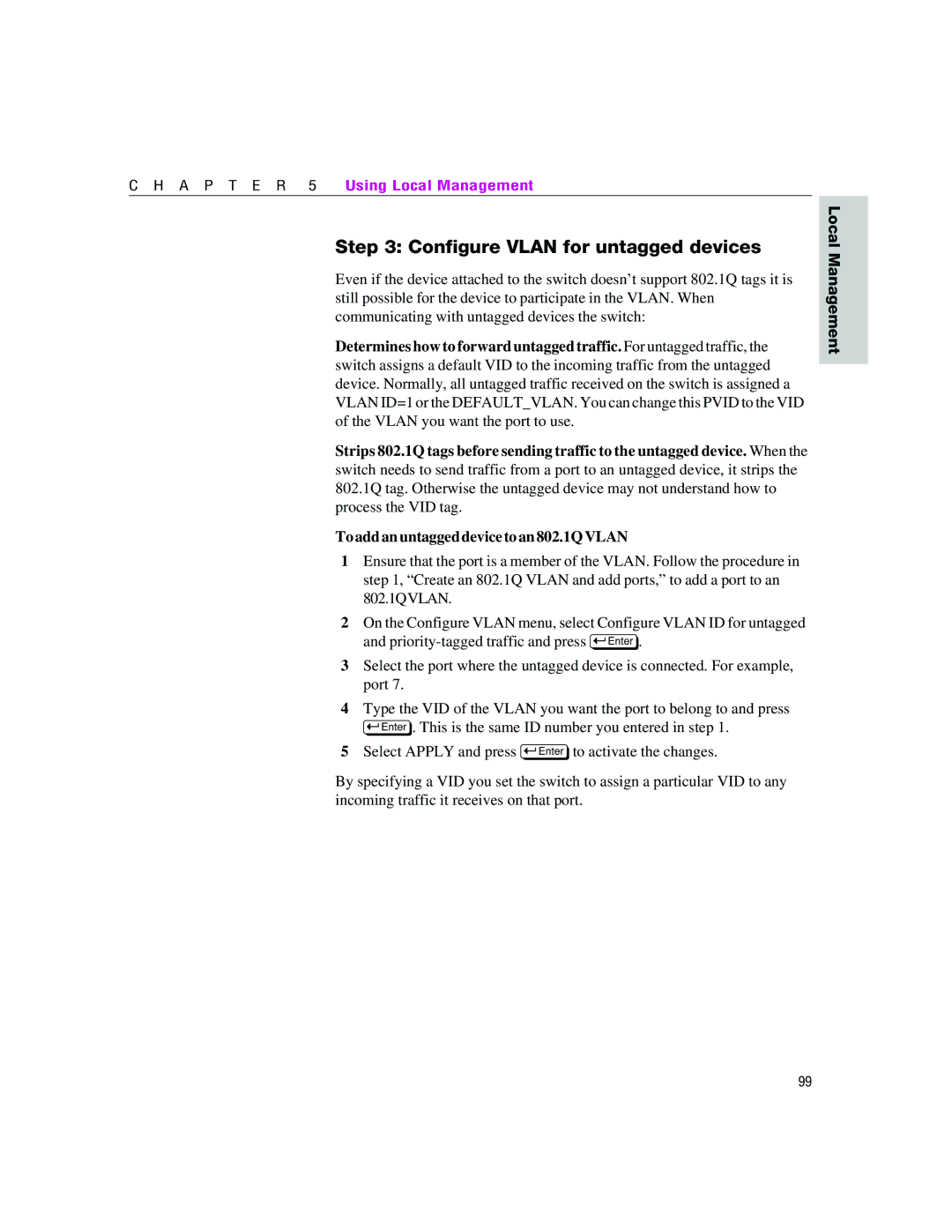
C H A P T E R 5 Using Local Management
Step 3: Configure VLAN for untagged devices
Even if the device attached to the switch doesn’t support 802.1Q tags it is still possible for the device to participate in the VLAN. When communicating with untagged devices the switch:
Determines how to forward untagged traffic. For untagged traffic, the switch assigns a default VID to the incoming traffic from the untagged device. Normally, all untagged traffic received on the switch is assigned a VLAN ID=1 or the DEFAULT_VLAN. You can change this PVID to the VID of the VLAN you want the port to use.
Strips 802.1Q tags before sending traffic to the untagged device. When the switch needs to send traffic from a port to an untagged device, it strips the 802.1Q tag. Otherwise the untagged device may not understand how to process the VID tag.
Toaddanuntaggeddevice toan802.1QVLAN
1Ensure that the port is a member of the VLAN. Follow the procedure in step 1, “Create an 802.1Q VLAN and add ports,” to add a port to an 802.1QVLAN.
2On the Configure VLAN menu, select Configure VLAN ID for untagged and
3Select the port where the untagged device is connected. For example, port 7.
4Type the VID of the VLAN you want the port to belong to and press E. This is the same ID number you entered in step 1.
5Select APPLY and press Eto activate the changes.
By specifying a VID you set the switch to assign a particular VID to any incoming traffic it receives on that port.
Local Management
99
